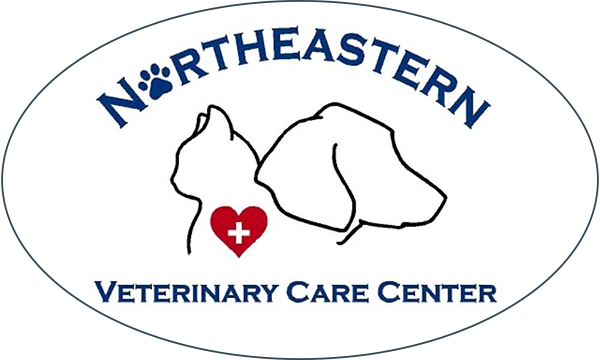Common Dental Issues In Pets
Dental issues in pets are more than just a nuisance; they can lead to serious health problems if left unchecked. Many pet owners may not realize that their furry friends are susceptible to a range of dental problems similar to those that afflict humans. From periodontal disease to tooth abscesses, these conditions can cause significant discomfort and may contribute to more severe health issues, including infections that can spread to vital organs. Regular veterinary check-ups and proper dental hygiene are crucial in preventing these problems. This article explores the most common dental issues in pets, highlighting the importance of early detection and intervention. By understanding the signs and symptoms of dental distress, pet owners can take proactive steps to ensure their pets lead healthy, pain-free lives. Let’s dive deeper into the signs, prevention, and treatments for dental issues in pets, arming you with the knowledge to protect your beloved animals.
Dental issues are very widespread among pets, and they are no more fun for Fluffy and Fido than they are for us. Gum disease, for instance, affects as many as 80 percent of dogs over the age of three and up to 90 percent of cats over the age of four. A local Groton, CT vet goes over some common ones in this article.
What Dental Issues Affect Pets?
Our animal companions are susceptible to many of the same issues as people can get, but they can also develop a few of their own. While animals can be afflicted by a range of issues, here are the ones most commonly seen:
Overcrowding: This is something we often see in very small dogs. Toy breeds just don’t have a whole lot of room for the 42 teeth most adult dogs have!
Gingivitis: You’re most likely already familiar with gingivitis, which is also the earliest stage of gum disease. Gingivitis is reversible, but you would need to be diligent about keeping your furry friend’s teeth clean. Your pet may also benefit from a good deep cleaning, to remove any tartar buildup.
Periodontal Disease: Periodontal disease is a serious progression of gum disease that can lead to severe dental issues in pets. As tartar accumulates on the teeth, it starts to push beneath the gum line, creating pockets where bacteria thrive. If left untreated, the infection can result in the loss of both bone and gum tissue, leading to tooth shifting and eventual tooth loss. Dental issues in pets like periodontal disease are also linked to broader health problems, including heart disease and liver failure, as the infection can spread through the bloodstream to vital organs.
Tooth Resorption: Tooth resorption, as the name suggests, is what happens when the tooth disintegrates, starting from within. There are actually several different types of it. Interestingly, no single cause has been pinpointed. This issue can be very painful for pets, and can also lead to fractures. Tooth resorption is often listed as one of the most widespread dental issues in kitties. In fact, as many as 70 percent of our feline pals show signs of it. However, it’s not uncommon in dogs, either.
Tooth Fractures: Fractures can be extremely painful for Fluffy and Fido. Once the pulp of the tooth is exposed, it often quickly becomes a haven for bacteria and infection. It also often exposes nerves. As mentioned above, dogs are quite prone to this, in large part because of their propensity for eating and chewing, well, everything. Fido’s love for playing Fetch and Frisbee definitely come into play here. These issues are typically treated by extracting the tooth.
Malocclusions: Basically, this is the term for teeth that don’t fit well together. This may sound like a cosmetic issue. We know, pets with overbites or underbites can be absolutely adorable. However, these issues can lead to problems chewing, and can be quite painful. They also increase the risk of pets developing other dental issues.
There are several types of malocclusions. Overbites, which are known as Mandibular distoclusion or Class 2 Malocclusion (MAL2), are a very common one. These happen when the lower jaw is shorter than the upper. A Class s malocclusion, or , underbite, is a Mandibular mesioclusion or Class 3 Malocclusion (MAL3).
Stomatitis: Stomatitis is a very painful inflammation of the mouth and throat. It can affect the lips, gums, roof of the mouth, tongue, and even the throat, and can make eating very painful. While there has been no official cause identified, it is likely a result of issues such as viruses and immune deficiencies.
Abscesses: Abscesses are just as painful for pets as they are for people. Some are easy to see, but others you may not spot.
Are Any Certain Breeds More Prone To Dental Disease?
Any cat can develop dental issues in pets at any time. However, some breeds are more prone to dental problems, including Abyssinians, Maine Coons, Persians, and Somalis. Brachycephalic cats, such as Persians, Himalayans, and Burmese, are also at a higher risk.
The same is true for dogs. Smaller dogs, such as Yorkies, Maltese, and Pomeranians, are highly prone to these issues. The Cavalier King Charles Spaniel, Pug, Dachshund, and Shih Tzu are on the list as well. As with kitties, brachys are also at risk.
What Is The Most Common Dental Problem In Dogs?
Gum disease would take the top spot for that one. Fractured teeth are also quite common among our canine pals. This isn’t surprising, given the fact that Fido uses his mouth to play. Retrieving sticks may be fun for your furry friend, but they can definitely do a number on his choppers.
What Is The Most Common Dental Problem In Cats?
Gum disease is also pretty widespread in cats, but it takes second place to tooth resorption. Unfortunately, as many as 70 percent of our feline pals are afflicted or show signs of tooth loss.
What Are The Warning Signs Of Dental Issues In Pets?
While the exact symptoms may vary depending on the issue, all dental issues in pets eventually lead to pain or discomfort. Some problems may start mildly and gradually worsen, while others can develop rapidly, requiring immediate attention.
Here are some of the things to look for:
- Bad Breath
- Broken Or Cracked Teeth
- Extra Teeth
- Tartar Buildup
- Abnormal Chewing
- Drooling
- Dropping Food From The Mouth
- Reduced Appetite
- Refusal To Eat
- Bleeding From The Mouth
- Swelling
- Bloody Saliva
- Pawing At The Mouth Or Head
- Taking Longer Eating
- Preferring Softer Foods
- Reduced Interest In Play
- Visible Swelling
- Bleeding Gums
- Weight Loss
- Bloody Streaks On Bowls Or Dishes
Understandably, dental issues can also take quite a toll on your pet’s mood. You may notice your furry friend acting grumpy or withdrawn. THey may not also want to have their face or head touched.
Of course, Fluffy and Fido can’t tell you what is going on, and they can’t make an appointment for themselves. If you notice any of these issues, be sure to reach out to your Groton, CT vet right away.
How Do I Care For My Pet’s Teeth?
A multi-pronged approach is best when addressing dental issues in pets. Brushing your pet’s teeth is the most effective way to combat plaque and tartar buildup. Additionally, dental flakes, oral rinses, and specially formulated treats or chews can be helpful. Always ensure your pet has access to fresh water and appropriate chew toys, which support oral health. For more personalized guidance, consult your vet.
Should I Have My Pet’s Teeth Examined?
Absolutely! We recommend having your pet’s choppers checked every year, starting around age one. Of course, you’d also need to make an appointment right away if you noticed any of the symptoms we’ve listed above.
Dental Issues in Pets in 2025: The Link Between Oral and Overall Health
What is the link between dental health and overall health in pets?
Dental health significantly impacts overall health in pets, as untreated dental issues can lead to serious systemic conditions. Periodontal disease, common in both cats and dogs, can cause infections that may spread through the bloodstream, potentially damaging vital organs such as the heart and liver. This highlights the importance of regular dental check-ups and proper oral hygiene practices to prevent the onset of dental diseases and safeguard the general well-being of pets.
What are the specific stages of dental disease progression?
Dental disease in pets begins with gingivitis, characterized by mild inflammation and reversible with diligent oral hygiene. If untreated, it progresses to periodontal disease, where tartar accumulation beneath the gum line forms pockets, fostering bacterial growth. This stage leads to the loss of bone and gum tissue, potentially causing tooth shifting and loss. Advanced periodontal disease can also have systemic effects, as bacteria may enter the bloodstream, affecting vital organs like the heart and liver, posing serious health risks to the pet.
What are the treatment options for various dental issues?
Treatment options for dental issues in pets vary based on the condition’s severity and type. Overcrowding may require tooth extraction, while gingivitis is typically managed with regular cleanings and improved dental care at home. Periodontal disease often necessitates deep cleaning below the gum line and, in advanced cases, tooth extraction. Tooth resorption and fractures also usually lead to tooth removal to alleviate pain and prevent infection. Malocclusions might be corrected surgically depending on the discomfort and functional problems they cause. In cases of stomatitis and abscesses, treatment includes medication and potentially surgery to address underlying infections and relieve pain.
How should pet owners introduce dental care to their pets?
Pet owners should gradually introduce dental care to ensure a positive experience for their pets. Starting from a young age is beneficial. Initially, let the pet taste a small amount of pet-formulated toothpaste, gradually progressing to gently massaging their gums and teeth with a finger brush. Consistency is vital—aim for daily brushing sessions, keeping them short and rewarding. For added dental health support, incorporate dental chews and toys designed to help reduce plaque. Regular veterinary check-ups, beginning around the first year, are crucial to monitor dental health and address any emerging issues early.
What are the risks and benefits of anesthesia in pet dental procedures?
Anesthesia in pet dental procedures presents both risks and benefits. The main risk involves complications from anesthesia, such as respiratory issues or adverse reactions, which are particularly notable in older pets or those with existing health conditions. However, the benefits often outweigh these risks. Anesthesia allows for thorough, pain-free dental cleanings and surgeries, crucial for treating conditions that could lead to severe infections or tooth loss. It prevents pets from feeling pain and stress during the procedure, making it safer and more efficient for both the pet and the veterinary staff.
Make An Appointment At Your Groton, CT Veterinary Clinic
Have you noticed any of these issues in your furry bestie? Has it been a while since you’ve had your pet’s teeth checked? Please feel free to contact us here at Northeastern Veterinary Care Center, your Groton, CT pet hospital, anytime.





